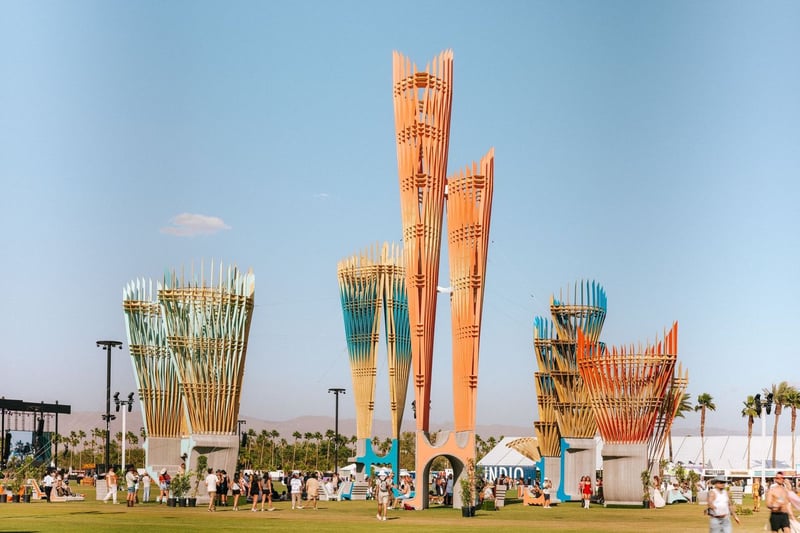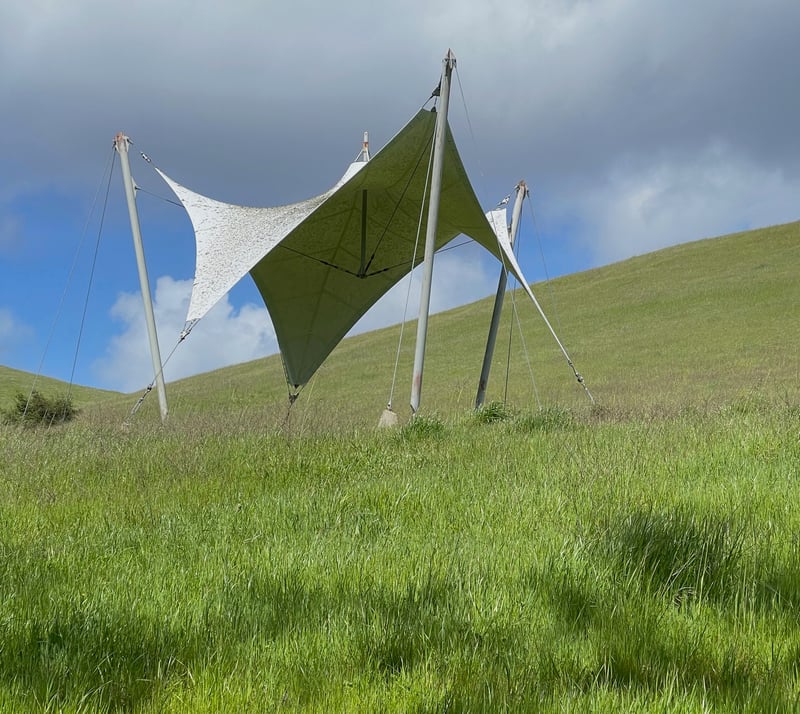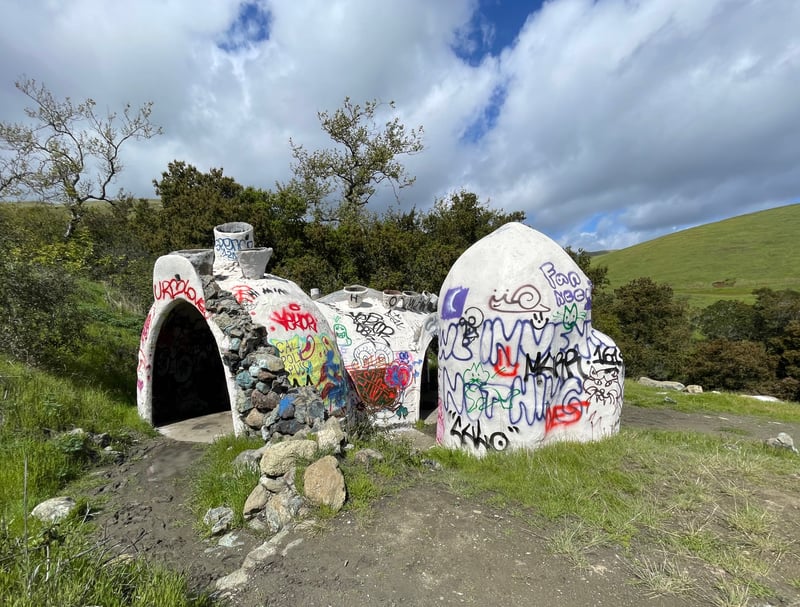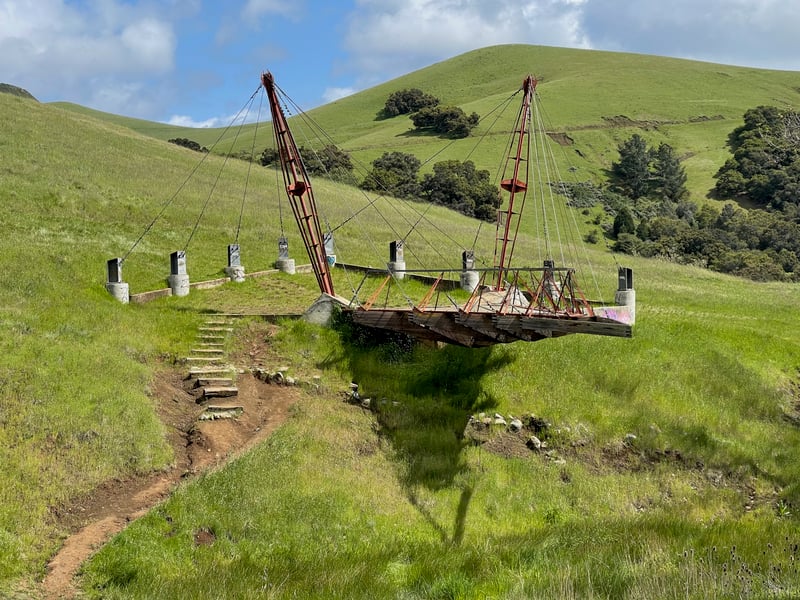|
|
|
|
|
|
|
Dear DNA friends,
I hope you’re all doing well and ready for some exciting Design Things to Do... which could involve going to the second week of Coachella.
Tickets are still available because sales have dropped this year. Factors include prices that are daunting even to LA's most well-heeled high schoolers and a line-up that is reportedly seen as less than stellar. This includes Lana Del Rey, Tyler the Creator, Doja Cat, Ice Spice, and electronic artist Grimes (who promises her second show will be technically flawless).
However, there's always another reason to attend Coachella: to eyeball the public artworks like Dancing in the Sky (above) by Morag Myerscough, which "celebrates the joy of collective experience with a vibrant, geometric plaza that draws the eye upwards to the beauty of the desert sky," says the exhibit producer Public Art Company (PAC).
PAC is helmed by Raffi Lehrer. In collaboration with Paul Clemente (Art Director at Coachella's founder Goldenvoice), he scours the world for designers with the ability to create an installation that can be visible and striking from all corners of the huge polo field, invites audience interaction, and also offers shade.
Perhaps inspired by his family heritage — Lehrer's parents are the LA architect Michael Lehrer and the landscape architect Mia Lehrer — he often selects architects who are testing new ideas.
Take for example Monarchs: A House in Six Parts by HANNAH (pictured below). It's a series of cone-shaped pavilions that "explores the fusion of 3-D printing with traditional craftsmanship." The creators, Cornell University professors Leslie Lok and Sasa Zivkovic, "reimagine architectural design through the lens of digital fabrication and natural inspiration."
Lehrer has a good nose for talent. One of his prior picks, Burkina Faso-born Francis Kéré, went on to win the Pritzker Prize!
 Monarchs: A House in Six Parts by HANNAH. Photos here and top of page by Lance Gerber. Monarchs: A House in Six Parts by HANNAH. Photos here and top of page by Lance Gerber.
Rites of Spring in Poly Canyon
On the topic of installations that test architectural ideas, I got the chance last week to visit Cal Poly San Luis Obispo's very cool Architectural Practices Laboratory, also known as "Poly Canyon," and, sadly, as the "Architectural Graveyard."
On the rolling slopes of a nine-acre canyon sit raw structures — tensile sails, geodesic domes, organic molded forms, and suspended platforms. After this year’s rains, they nest in deep grass. They are the visible remnants of a wonderful tradition at the school in which students learn by doing — the architecture school’s version of a spring baccanale.
Every April students compete to create the winning project in Design Village. They must construct group housing shelters based on a structural theme, and then test their concepts by spending two nights in them.
 This tensile structure sits gracefully on the hill. Photo by Frances Anderton. This tensile structure sits gracefully on the hill. Photo by Frances Anderton.
Greg Wynn, architect and faculty member at the school, says this project is the main attraction for Cal Poly SLO students. They work intensively in teams. first designing, then building. "And then that day comes when they get to sew some fabric and lash some bamboo into a makeshift hut that shelters their team for a pair of nights," explains Wynn. "And they love the experience, and they become a part of the legacy of the Canyon. And in the cold of the night when the coyotes howl, they hate the experience. Years later, they recall the Canyon as the place where their architectural journey became real.”
The Architectural Practices Laboratory started in the early 1960s and for several decades some structures were kept and students could live in them instead of dorms. But that liberating experience came to an end amidst school concerns about safety. Now these vestigial buildings sit dormant, quietly disintegrating and gathering graffiti.
 This organic structure at Cal Poly SLO is now a target for taggers. Photo by Frances Anderton. This organic structure at Cal Poly SLO is now a target for taggers. Photo by Frances Anderton.
However, the annual Design Village serves as a temporary “renaissance of the Canyon each year,” says Wynn. “It is almost like a spring festival within a ruinous landscape, both weird and fun. Architectural 'Burning Man' for freshmen.”
This year’s theme is "modular," taking place April 26th–28th.
If you're in San Luis Obispo, go check it out. Unlike Coachella, you don't have to pay a dime to enjoy this site-specific art!
 This cable-supported cantilever is embedded into the hillside at Cal Poly SLO. Photo by Frances Anderton. This cable-supported cantilever is embedded into the hillside at Cal Poly SLO. Photo by Frances Anderton.
|
|
|
|
|
|
|
|
|
|
|
|
|
|
|
|
|
|
|
|
|
|
|
|
|
|
|
|